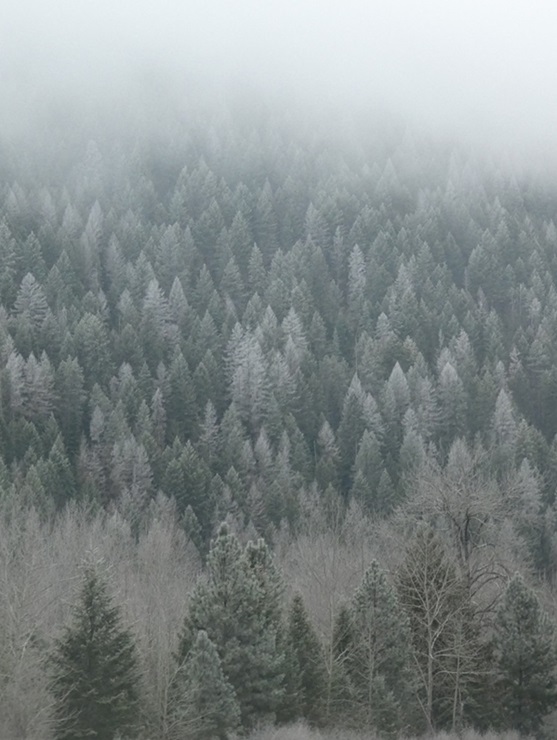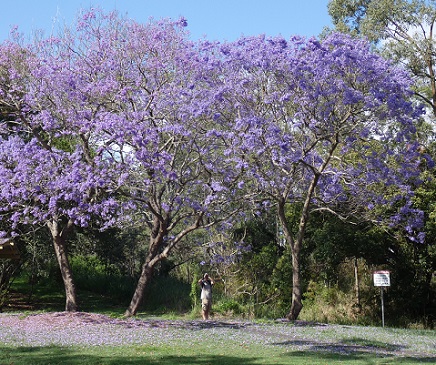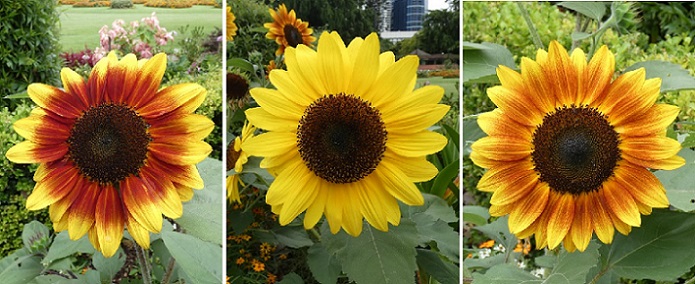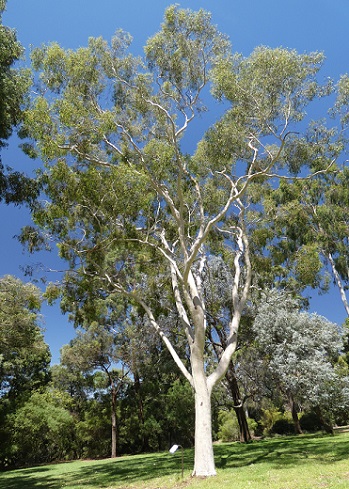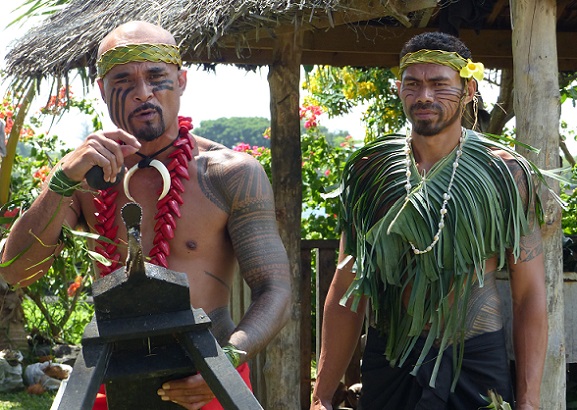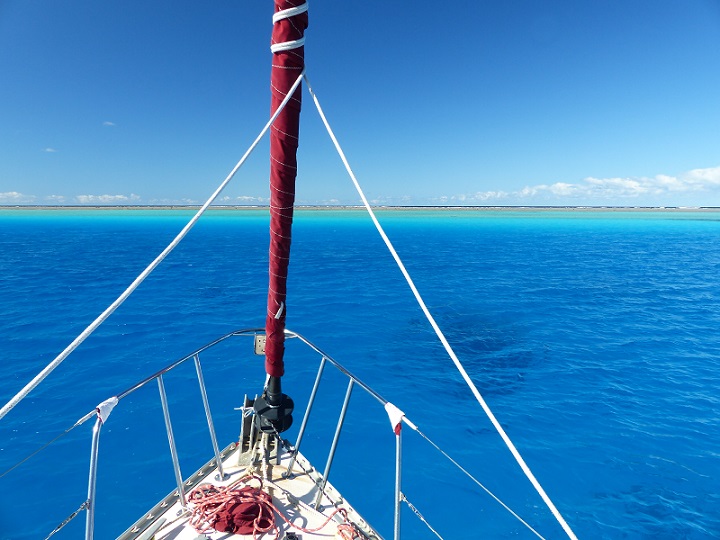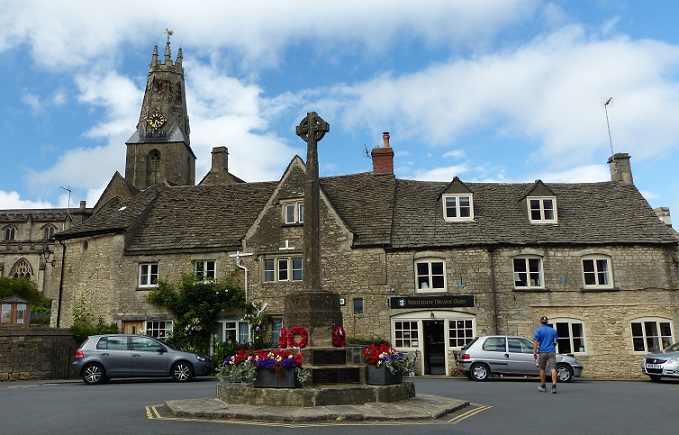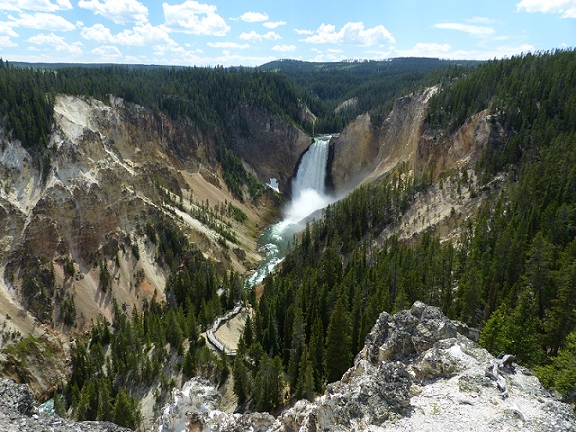
Tregoning
12 April 2024 | We are back aboard Tregoning in Mersin Marina, Mersin, Türkiye
02 April 2024 | We are in Toronto Airport, Canada: Tregoning is in Mersin Marina, Mersin, Türkiye
25 February 2024 | We are back in Gainesville, FL: Tregoning is in Mersin Marina, Mersin, Türkiye
18 February 2024 | We are in Glenwood, New Mexico: Tregoning is in Mersin Marina, Mersin, Türkiye
12 February 2024 | We are in Morro Bay, California: Tregoning is in Mersin Marina, Mersin, Türkiye
19 January 2024 | We are in Vancouver, BC Canada: Tregoning is in Mersin Marina, Mersin, Türkiye
01 January 2024 | We are in Washington State: Tregoning is in Mersin Marina, Mersin, Türkiye
15 December 2023 | We are in Minnesota: Tregoning is in Mersin Marina, Mersin, Türkiye
18 November 2023 | We are in Florida: Tregoning is in Mersin Marina, Mersin, Türkiye
29 October 2023 | We're in Florida - Tregoning is at B-dock, Mersin Marina, Mersin, Türkiye
21 October 2023 | 7 Oda Kapadokya Cave Hotel, Ürgüp, Türkiye
14 October 2023 | Hotel Aşikoğlu, Boğazkale, Türkiye
07 October 2023 | B-dock, Mersin Marina, Mersin, Türkiye
19 September 2023 | “Chez Jon & Angela”, Near Otterton, Devon, UK
14 September 2023 | Airbnb in Fortuneswell on the Isle of Portland, Dorset, UK
11 September 2023 | With Mike, Grange-over-Sands, Cumbria, UK
03 September 2023 | Ardington House, Ardington, Oxfordshire, UK
24 August 2023 | Near "Chez Joan and Peter", College of Roseisle, Moray, Scotland
11 August 2023 | Andrew's house (not exactly), Lichfield, UK
22 July 2023 | Chez Gail, near the New York Café, Budapest, Hungary
High Honors for a Scottish Author
07 October 2017 | Apia Marina, `Upolu Island, Samoa
Photo: Villa Vailima; the central and left sections were the former home of Robert Louis Stevenson and the right wing was added later
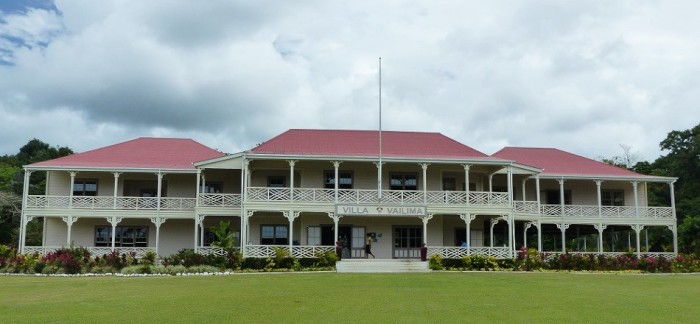
It may seem a bit odd that one of the first themes that I write about for Samoa concerns a person from half way around the world who only lived on `Upolu Island for five years. Am I being a typical palagi (Samoan word used to describe foreigners) who is only interested in ex-patriots? No this person was admired and loved by the Samoans who have painstakingly maintained and restored his home and tomb despite much damage from the category 4 Cyclone Ofa in 1990 (causing US$130 million-worth of damage in Samoa) and category 4 Cyclone Val in 1991 (which caused US$200 million-worth of damage).
Given the native name of Tusitala (Samoan for "Teller of Tales", i.e. a storyteller), this Scottish author who made his home and was laid to rest in the village of Vailima, just outside Apia, was Robert Louis Stevenson. Within just a few days of arriving in Samoa, we jumped in a taxi and went to visit the museum that was once his beautiful residence, Villa Vailima.
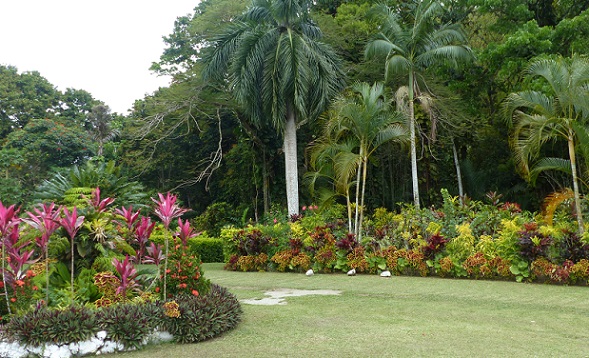
Part of the tropical gardens at Villa Vailima
Born in Edinburgh in 1850, Stevenson was plagued by bouts of ill-health all of his life. This did not prevent him from becoming the hugely successful author of such well-known tomes as Treasure Island (which Randall and I have just re-read), Kidnapped, The Strange Case of Dr. Jekyll and Mr Hyde, and A Child's Garden of Verses. His novels, poetry, and travel writings were popular enough during his lifetime that he was became a wealthy man. This allowed him to travel throughout the world with his wife, Fanny Osbourne, and her two children, looking for a climate that suited his delicate health.
Finally in 1890, he realized that he could live comfortably in Samoa and bought about 160 ha (400 acres) of land uphill from Apia, in the village of Vailima. Here, on the side of Mount Vaea he had built a large two-story house in two adjoining square sections, surrounded by expansive lawns and attractive gardens. This beautifully restored house is kept cool by a marvelous flow of air through large windows and doors, into spacious rooms with wide, shaded verandahs.
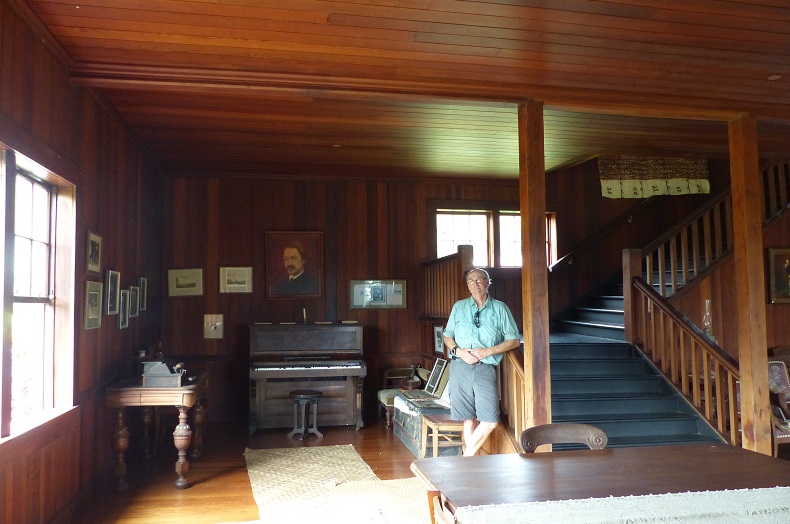
Randall poses (similarly to RLS in an old photo) at the bottom of the main staircase in Villa Vailima
Arriving soon after the museum opened for the day, Randall and I were left to explore the rooms on our own (shoes left at the door), and only as we were almost finished did a guided tour catch up to us. After the Stevenson family left Samoa, the house was used by German governors and various embassies. A third square wing was added with offices on the upper floor (now a gallery of photographs) and an open area on the ground floor for large functions.
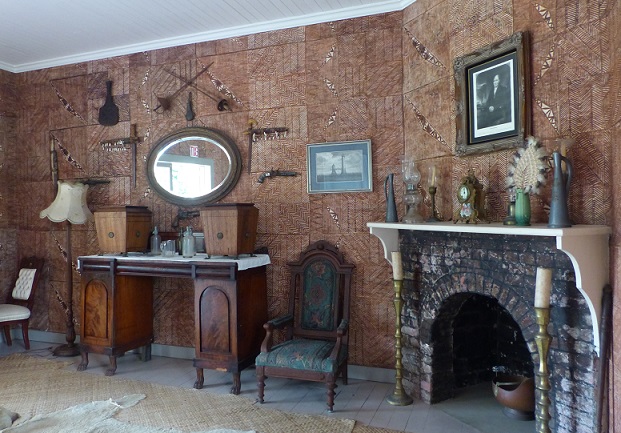
The tapa room (walls covered in panels of tapa) in Villa Vailima
After exploring the house, we put on our hiking shoes and followed the loop trail up Mount Vaea. We ascended on the steeper, shorter arm of the trail before returning down the longer (but in a few places no-less steep) part of the loop. It was a delightful walk during which we saw three species of bird that were new to us: the scarlet robin, Samoan whistler, and the Samoan fantail (the latter two being endemic to Samoa). We also saw plenty of birds that we had seen before such as Samoan starlings, white-rumped swiftlets, and the two honeyeaters, the wattled honeyeater and the striking bright-red-and-black cardinal myzomela.
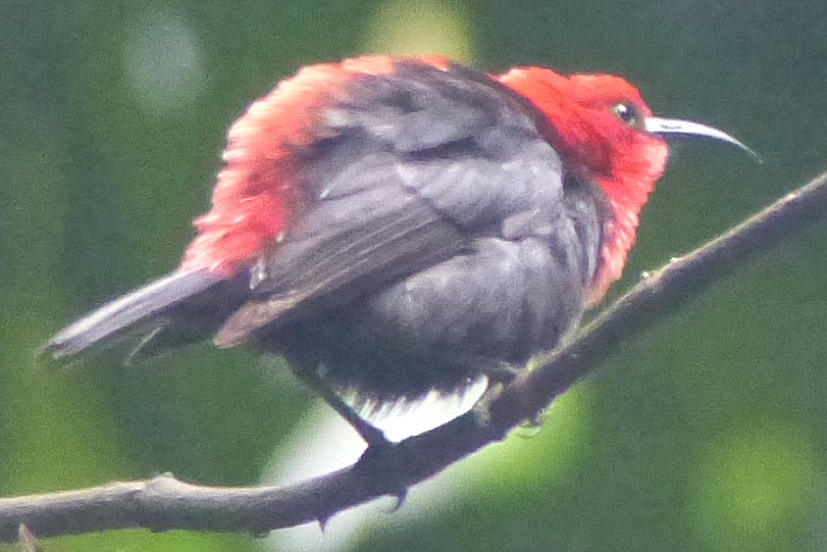
A cardinal myzomela with its feathers puffed-out
The views of the sea from the top of the trail at Stevenson's tomb have been rather obscured by trees but we could see part of Apia Harbour and the container-port. In the other direction, the central ridge of mountains loomed darkly against the grey cloudy sky. The clouds keep the temperature reasonably tolerable for the hike but we still appreciated taking a dip in the shallow, cool, freshwater pool at the bottom of the trail.
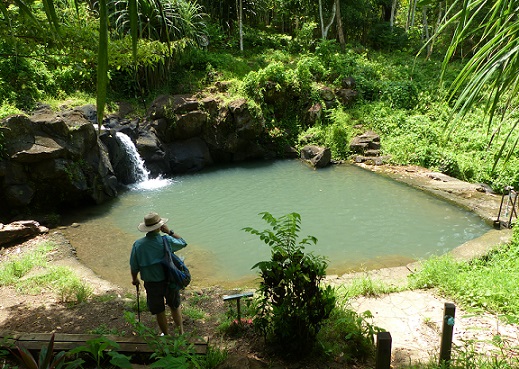
Randall looks forward to a refreshing dip in the pool near Villa Vailima
But this is enough about our enjoyable day, what of Stevenson's life in Samoa?
Although continuing to write, Stevenson was closely involved in the development and running of his estate. Becoming fluent in Samoan, he was a great supporter of the rights of the Samoan people during the period of colonization by Germany from 1889 to 1914.
In the 1870s, a dispute between two of the four dominant Samoan ´aiga, or extended families, divided the Samoa Islands. This resulted in the selling of much of their land to Europeans to buy armaments to settle the dispute. The Germans, British, and Americans soon started squabbling over the Samoan territories, with war ships from each power crowding Apia Harbour. A terrible cyclone in 1889 destroyed most of these ships, however, and in 1899 the Tripartite Treaty was signed giving eastern Samoa to the Americans and Western Samoa to the Germans. Although they had promised to rule according to Samoan custom, this intent was blatantly ignored by the German governor.
Samoans came to Stevenson for advice and he was became involved in local politics, which were largely colored by his opinion that the appointed European officials were mostly incompetent. After futile attempts to gain improvements in the administration of the islands, Stevenson published "A Footnote to History" which was such a withering rebuke of the colonial conditions that two officials were recalled.
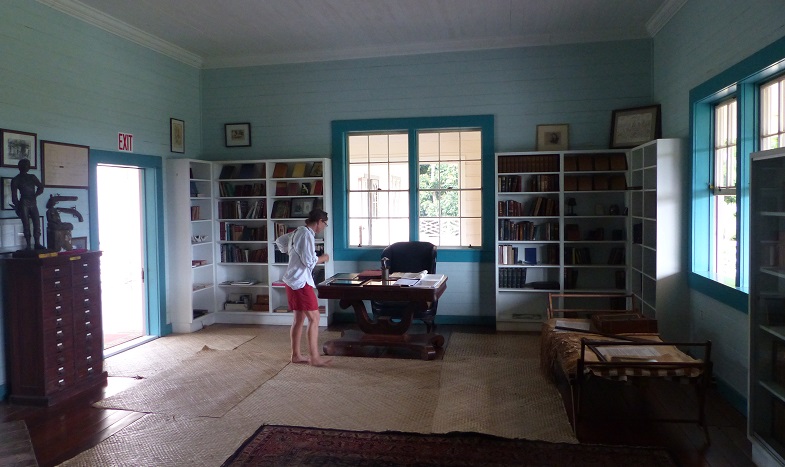
Alison looks at copies of some of Stevenson's correspondences in his study in Villa Vailima
His views annoyed many of the other Europeans in Samoa and caused him to fear that he might be deported, but greatly increased his popularity with the native Samoans. In October 1894, in gratitude for his kindness and support, several Samoan chiefs arranged for a road to be hand-dug between Vailima and Apia which they called O Le Ala O Le Alofa, the Road of the Loving Heart.
Just two months later, at the age of 44, Stevenson collapsed while talking to Fanny and straining to open a bottle of wine. He died a few house later, probably from a massive stroke. The Samoans insisted on surrounding his body with a watch-guard during the night while, by flaming torchlight, 200 men hacked a steep path almost a kilometer up the rocky side of Mount Vaea. At a site overlooking the sea, a grave was dug by the men of his household. The following day, a group of strong Samoans carried their Tusitala upon their shoulders to the gravesite, where he was buried in a style usually reserved for Samoan royalty.
Eventually, a concrete Victorian tomb was built for Stevenson upon which was placed, as he had wished, a plaque of the Requiem that he had written during a serious illness some years previously.
Under the wide and starry sky,
Dig the grave and let me lie.
Glad did I live and gladly die,
And I laid me down with a will.
This be the verse you grave for me:
Here he lies where he longed to be;
Home is the sailor, home from sea,
And the hunter home from the hill.
After Stevenson was laid to rest, the Samoan chiefs forbade the use of firearms on Mount Vaea, "so that the birds, undisturbed, might sing about his grave".
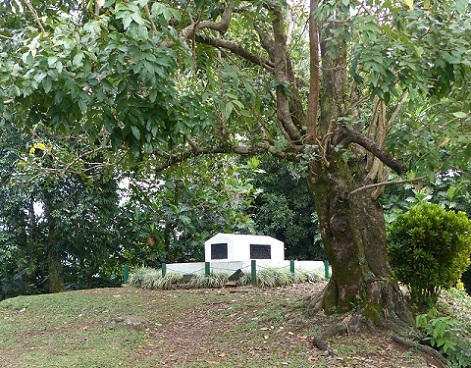
Robert Louis Stevenson's tomb in the tropical forest on Mount Vaea
Fanny returned to California to begin a new life in America and Europe but after she died in 1914, her daughter carried Fanny's ashes to Samoa to be interred next to Stevenson. The bronze plaque for Fanny bears her Samoan name 'Aolele', Flying Cloud, and part of a poem that Stevenson had once written for her.
Teacher, tender comrade, wife,
A fellow-farer true through life
Heart-whole and soul free,
The august Father gave to me.
Standing on the tropical hillside listening to the birds and reading the interpretive signs about Stevenson's burial and the plaques on the tomb, I found such poetic testimonials to gratitude, respect, and love unexpectedly moving.
Given the native name of Tusitala (Samoan for "Teller of Tales", i.e. a storyteller), this Scottish author who made his home and was laid to rest in the village of Vailima, just outside Apia, was Robert Louis Stevenson. Within just a few days of arriving in Samoa, we jumped in a taxi and went to visit the museum that was once his beautiful residence, Villa Vailima.

Part of the tropical gardens at Villa Vailima
Born in Edinburgh in 1850, Stevenson was plagued by bouts of ill-health all of his life. This did not prevent him from becoming the hugely successful author of such well-known tomes as Treasure Island (which Randall and I have just re-read), Kidnapped, The Strange Case of Dr. Jekyll and Mr Hyde, and A Child's Garden of Verses. His novels, poetry, and travel writings were popular enough during his lifetime that he was became a wealthy man. This allowed him to travel throughout the world with his wife, Fanny Osbourne, and her two children, looking for a climate that suited his delicate health.
Finally in 1890, he realized that he could live comfortably in Samoa and bought about 160 ha (400 acres) of land uphill from Apia, in the village of Vailima. Here, on the side of Mount Vaea he had built a large two-story house in two adjoining square sections, surrounded by expansive lawns and attractive gardens. This beautifully restored house is kept cool by a marvelous flow of air through large windows and doors, into spacious rooms with wide, shaded verandahs.

Randall poses (similarly to RLS in an old photo) at the bottom of the main staircase in Villa Vailima
Arriving soon after the museum opened for the day, Randall and I were left to explore the rooms on our own (shoes left at the door), and only as we were almost finished did a guided tour catch up to us. After the Stevenson family left Samoa, the house was used by German governors and various embassies. A third square wing was added with offices on the upper floor (now a gallery of photographs) and an open area on the ground floor for large functions.

The tapa room (walls covered in panels of tapa) in Villa Vailima
After exploring the house, we put on our hiking shoes and followed the loop trail up Mount Vaea. We ascended on the steeper, shorter arm of the trail before returning down the longer (but in a few places no-less steep) part of the loop. It was a delightful walk during which we saw three species of bird that were new to us: the scarlet robin, Samoan whistler, and the Samoan fantail (the latter two being endemic to Samoa). We also saw plenty of birds that we had seen before such as Samoan starlings, white-rumped swiftlets, and the two honeyeaters, the wattled honeyeater and the striking bright-red-and-black cardinal myzomela.

A cardinal myzomela with its feathers puffed-out
The views of the sea from the top of the trail at Stevenson's tomb have been rather obscured by trees but we could see part of Apia Harbour and the container-port. In the other direction, the central ridge of mountains loomed darkly against the grey cloudy sky. The clouds keep the temperature reasonably tolerable for the hike but we still appreciated taking a dip in the shallow, cool, freshwater pool at the bottom of the trail.

Randall looks forward to a refreshing dip in the pool near Villa Vailima
But this is enough about our enjoyable day, what of Stevenson's life in Samoa?
Although continuing to write, Stevenson was closely involved in the development and running of his estate. Becoming fluent in Samoan, he was a great supporter of the rights of the Samoan people during the period of colonization by Germany from 1889 to 1914.
In the 1870s, a dispute between two of the four dominant Samoan ´aiga, or extended families, divided the Samoa Islands. This resulted in the selling of much of their land to Europeans to buy armaments to settle the dispute. The Germans, British, and Americans soon started squabbling over the Samoan territories, with war ships from each power crowding Apia Harbour. A terrible cyclone in 1889 destroyed most of these ships, however, and in 1899 the Tripartite Treaty was signed giving eastern Samoa to the Americans and Western Samoa to the Germans. Although they had promised to rule according to Samoan custom, this intent was blatantly ignored by the German governor.
Samoans came to Stevenson for advice and he was became involved in local politics, which were largely colored by his opinion that the appointed European officials were mostly incompetent. After futile attempts to gain improvements in the administration of the islands, Stevenson published "A Footnote to History" which was such a withering rebuke of the colonial conditions that two officials were recalled.

Alison looks at copies of some of Stevenson's correspondences in his study in Villa Vailima
His views annoyed many of the other Europeans in Samoa and caused him to fear that he might be deported, but greatly increased his popularity with the native Samoans. In October 1894, in gratitude for his kindness and support, several Samoan chiefs arranged for a road to be hand-dug between Vailima and Apia which they called O Le Ala O Le Alofa, the Road of the Loving Heart.
Just two months later, at the age of 44, Stevenson collapsed while talking to Fanny and straining to open a bottle of wine. He died a few house later, probably from a massive stroke. The Samoans insisted on surrounding his body with a watch-guard during the night while, by flaming torchlight, 200 men hacked a steep path almost a kilometer up the rocky side of Mount Vaea. At a site overlooking the sea, a grave was dug by the men of his household. The following day, a group of strong Samoans carried their Tusitala upon their shoulders to the gravesite, where he was buried in a style usually reserved for Samoan royalty.
Eventually, a concrete Victorian tomb was built for Stevenson upon which was placed, as he had wished, a plaque of the Requiem that he had written during a serious illness some years previously.
Under the wide and starry sky,
Dig the grave and let me lie.
Glad did I live and gladly die,
And I laid me down with a will.
This be the verse you grave for me:
Here he lies where he longed to be;
Home is the sailor, home from sea,
And the hunter home from the hill.
After Stevenson was laid to rest, the Samoan chiefs forbade the use of firearms on Mount Vaea, "so that the birds, undisturbed, might sing about his grave".

Robert Louis Stevenson's tomb in the tropical forest on Mount Vaea
Fanny returned to California to begin a new life in America and Europe but after she died in 1914, her daughter carried Fanny's ashes to Samoa to be interred next to Stevenson. The bronze plaque for Fanny bears her Samoan name 'Aolele', Flying Cloud, and part of a poem that Stevenson had once written for her.
Teacher, tender comrade, wife,
A fellow-farer true through life
Heart-whole and soul free,
The august Father gave to me.
Standing on the tropical hillside listening to the birds and reading the interpretive signs about Stevenson's burial and the plaques on the tomb, I found such poetic testimonials to gratitude, respect, and love unexpectedly moving.
Comments
| Vessel Name: | Tregoning |
| Vessel Make/Model: | Morgan Classic 41 |
| Hailing Port: | Gainesville, FL |
| Crew: | Alison and Randall |
| About: | We cast-off from Fernandina Beach in north Florida on 1st June 2008 and we have been cruising on Tregoning ever since. Before buying Tregoning, both of us had been sailing on smaller boats for many years and had worked around boats and water throughout our careers. |
| Extra: | “Tregoning” (rhymes with “belonging”) and is a Cornish word (meaning “homestead of Cohnan” or “farm by the ash trees”) and was Alison's mother’s middle name. Cornwall is in southwest England and is where Alison grew-up. |
Tregoning's Photos - Main
 |
Extra photographs from our three-week campervan tour of the South Island from November 15th to December 5th 2015
217 Photos
Created 4 January 2016
|
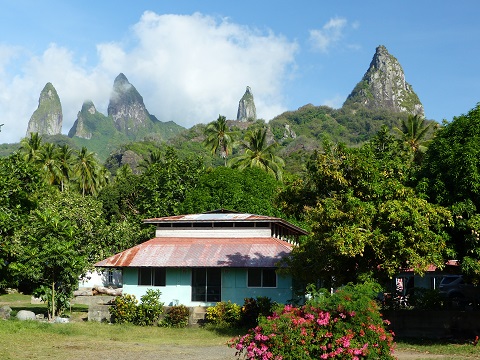 |
Random pictures from our month spent on the islands of Hiva Oa, Tahuata, Ua Pou, and Nuku Hiva
45 Photos
Created 18 July 2015
|
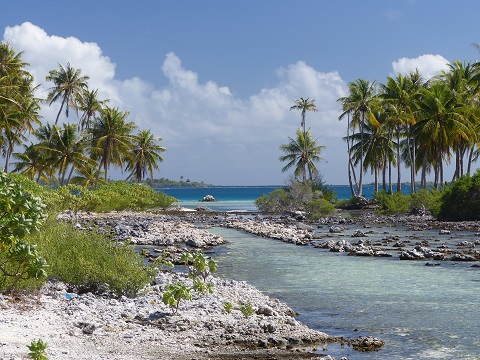 |
Random pictures from our month spent in 4 Tuamotu Atolls; Ahe, Fakarava, Tahanea, and Toau
32 Photos
Created 1 July 2015
|
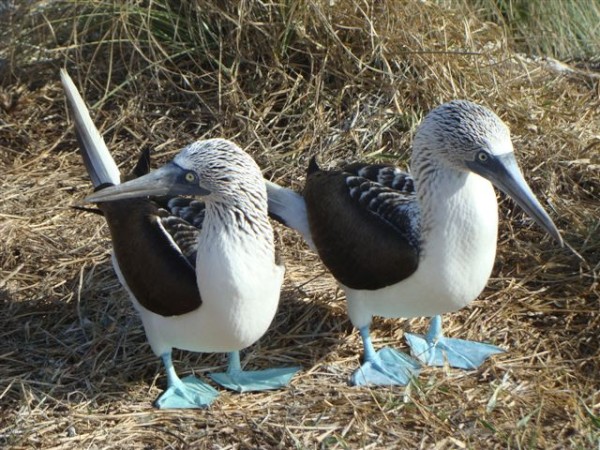 |
Some of the birds, fish, reptiles, and mammals (and others) that we have seen in Mexico
74 Photos
Created 5 May 2014
|
Tregoning

Who: Alison and Randall
Port: Gainesville, FL
